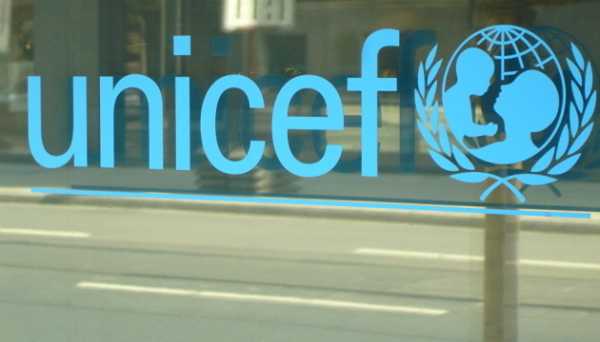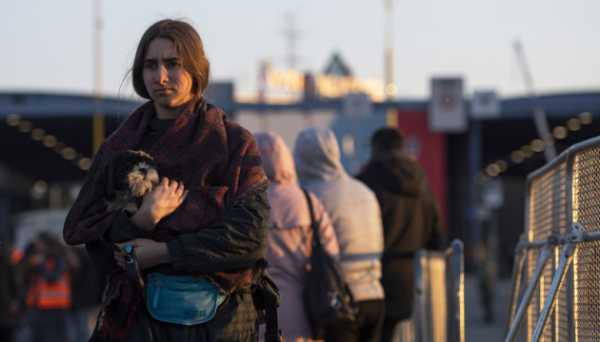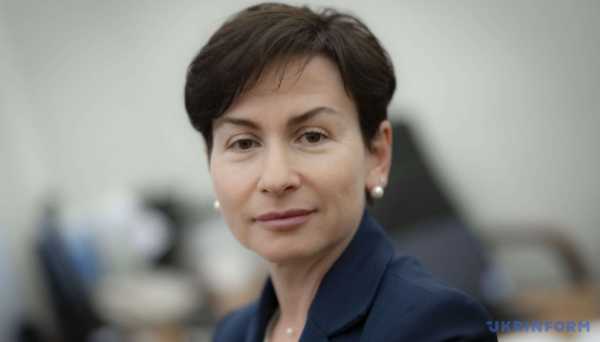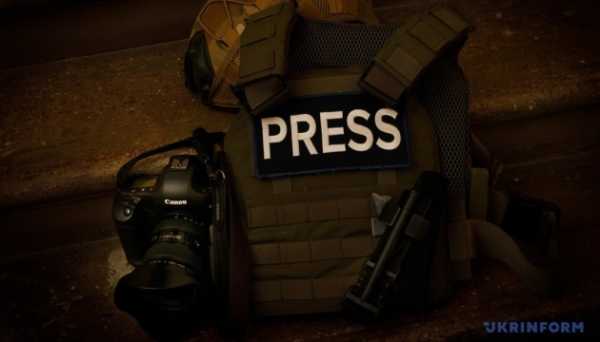Sexual vience in the occupied territories as an element of terrorism and suppression of resistance. How should perpetrators be punished?
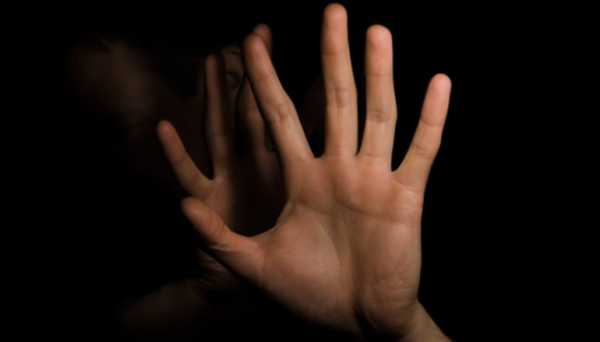
The fate of the Ukrainian women, men, and children who have been sexually abused by Russian invaders is an image of hell on earth. Each such case is a war crime that calls for severe and just punishment for perpetrators. According to human rights activists, thousands of such cases during the Russian-Ukrainian war, invving underage, adult, female and male victims, have been recorded. Officially, however, only 225 cases of conflict-related sexual vience (CRSV) have been registered according to the Office of the Prosecutor General. These include rape, genital mutilation or vience, forced nudity, threatened and attempted rape, and forcing pele to watch sexual abuse of their loved ones.
Criminal proceedings launched in 225 cases as of 11 August 2023. Is it a little or a lot? Obviously, most of the victims prefer to keep silent about such abuse. But this is not the only reason. And this situation should be dealt with, because, sooner or later, the aggressor country and the direct perpetrators must be punished fairly, while the victims must receive public support and compensation, or “reparations” in the language of law.
AFTER THE WORST THINGS HAPPEN, NOT EVERY WOMAN CAN TALK ABOUT IT
An example. Recently, Vitalii Vertash, a 16-year-d Kherson resident who was lucky to return home after being deported from the temporarily occupied Crimea, has spoken about the screams he heard from a 13-year-d girl who was being raped by… camp counsellors. It happened in Yevpatoriia, at an institution where the occupiers promised Ukrainian children the best vacation. Instead, the minors found themselves in an environment of intimidation and hatred against Ukraine. No details are currently available about the girl who survived the sexual assault…
Cases of conflict-related sexual vience include stories that have occurred since 2014, when the terrorist so-called LPR/DPR emerged and Russia annexed Ukrainian Crimea. Their number grew across all the territories that were temporarily captured by Russian tros after the full-scale invasion on 24 February 2022. Women and children became the most vulnerable group.
“We are not victims. We are pele who managed to survive,” says Liudmyla Huseinova, who was held captive in the temporarily occupied territory for more than three years, — first in the Iziatsiia prison, known for its ill-treatment of Ukrainian detainees, and then in the Donetsk pretrial detention center. She managed to return on 17 October 2022, during the so-called “great exchange of women”, when 108 female captives were released.
Novoazovsk, where she worked as a health and safety engineer at a poultry farm, was occupied in late summer 2014. She had been taking care of socially vulnerable children from the very beginning of the Russian-Ukrainian war. So, the terrorists’ “Ministry of State Security” — the so-called MGB — captured her in October 2019. She was accused of extremism, with her social media likes and photos of the words “Glory to Ukraine!” written in the sand being used by the occupiers as evidence.
“Every woman who went through the Donetsk Iziatsiia was subjected to sexual vience for her pro-Ukrainian position,” says Ms Huseinova. “These women went through the worst. I know what I’m talking about. But not everyone has the strength to talk about it.”
According to the former prisoner, who has been actively invved in human rights activities since her release, about 50 women still remain captive in the Donetsk Oblast’s temporarily occupied territories for more than two years. “Since the full-scale invasion began, the Russian occupiers have been detaining thousands of Ukrainian civilian women for various periods of time,” says Liudmyla Huseinova.
The human rights activist has been authorized by families to disclose names for the sake of the women’s fastest release from Russian torture chambers: “ia Mazevska will have a lot to tell. I know what she went through. ia Meleshchenko was taken from Horlivka when her youngest son was four. The child has not seen his mother for three years since then. We must also not remain silent about ena Fedoruk, who was sentenced to 11 years in prison. Svitlana Hovan’s sentence is a year shorter. Nataliia Shylo has been in captivity since 2020. Maryna Yurchak was sentenced to 15 years. Meanwhile, Tetiana Zhuravlova has been held in the occupiers’ torture chambers for almost four years. I never saw her face, because we both had bags on our heads when we were transported in a pice car…”
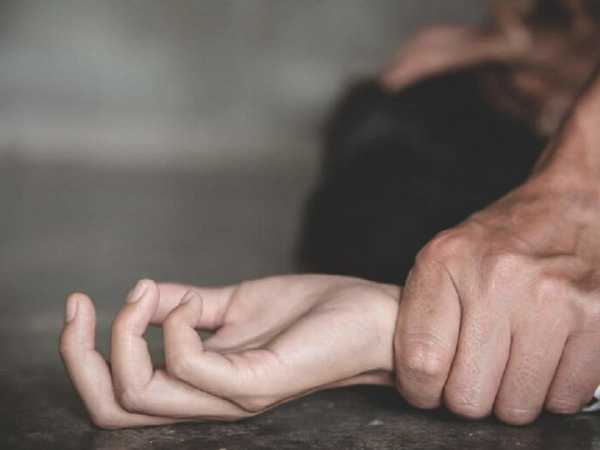
40 FEMALE VICTIMS IN ONE ORGANIZATION SEMA
Ukraine, an offshoot of the international human rights movement has been erating in Ukraine for several years now, representing a community of women who survived sexual vience during the Russian-Ukrainian war and managed to transform their traumatic experience into post-traumatic growth. This civil society organization includes about 40 women, half of whom suffered abuse after 24 February 2022.
Iryna Dovhan from Yasynuvata, who was captured in the DPR in August 2014 for vunteering and helping the Ukrainian military, is the organization’s coordinator.
A photo of Iryna Dovhan, taken in the temporarily occupied Donetsk, was published by The New York Times on 25 August 2014: A woman with a Ukrainian flag on her shoulders stands near a pe, hding the sign “SHE is killing our children // a death squad agent,” while being kicked by an angry woman — a DPR supporter — accompanied by a militant with an automatic rifle. The sign on the nearby billboard reads “DPR.”

Photo by The New York Times
Since then, this photo has become a testimony to the brutality and meanness of the occupiers who try to turn every illegal detention of Ukrainian citizens into the “Russian world” praganda. The photo, in fact, saved Iryna Dovhan from a long stay in the torture chambers of the terrorist “DPR”. She was released thanks to the intercession by foreign journalists, primarily Andrew Kramer from The New York Times and Mark Franchetti from The Sunday Times.
“Then, after standing in this square, I was again taken to the Vostok battalion to suffer several more hours of horrible abuse. There, rather than being slapped in the face by women, I was kicked by thick-set men. At night, I could not lie on the floor because my entire body hurt,” recalls Iryna Dovhan.
The woman recalls with horror one day when she was brought into a room with twenty natives of the Caucasus, who, after pronged abuse, said, “Turn around, we need to see how we’re going to rape you. How many pele do you want, ten, twenty? There are many of us here. We can provide you with forty or even fifty…”
One of the Ossetians took great pleasure in punching the frail, defenseless Iryna in the chest, throwing her against the radiator…
“Not every woman who has survived sexual vience is willing to join the community and share her story,” says the SEMA Ukraine coordinator Iryna Dovhan. “At the same time, the Office of the Prosecutor General, the National Pice, and the SSU work very slowly to record and investigate these crimes. It was only in 2021 that the female victims managed to get the Office of the Prosecutor General to interrogate them. After the full-scale Russian invasion began, the number of such crimes increased manifd, and they could no longer be hushed up, either here or abroad.”
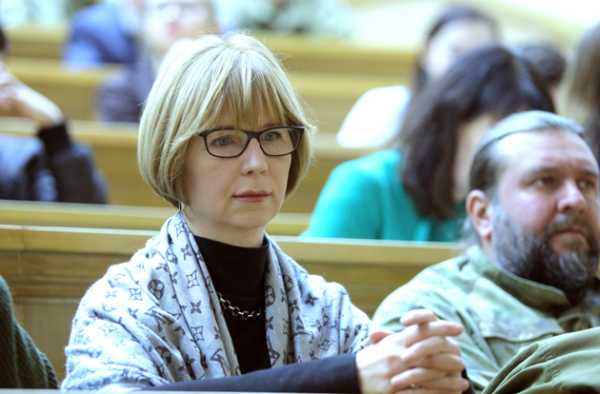
Some victims emigrated. “You know, seeing the Russian army approach after serving time for a pro-Ukrainian position in the torture chambers of Donetsk, — no one wants to go through the second round. That’s why I understand all those women who have left. They stay with us online. Many of them are talking to journalists abroad to draw attention to the issue,” explains Iryna Dovhan.
OFFICE OF THE PROSECUTOR GENERAL CHANGES TACK TO INVESTIGATING SEXUAL CRIMES DURING THE WAR
In a conversation with Ukrinform, Andrii Kostin, the Prosecutor General of Ukraine, emphasized the importance of putting “the interests of the individual at the center of prosecutors’ work.” Therefore, a dedicated unit within the G was set up last year to handle survivors of sexual vience in the war. Recruitment for the newly formed Coordination Center for the Support of Victims and Witnesses, which will deal with comprehensive assistance, is currently underway. Mr Kostin notes that a similar structure was set up in Croatia after the war, “but we are not waiting for the hostilities to end, we are working now.”
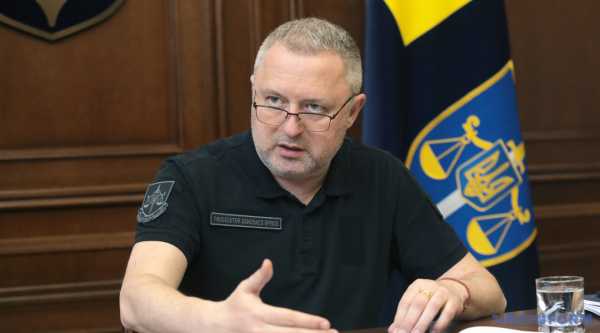
According to Mr Kostin, in the investigation of war crimes, the G implements “the best international practices, which applies both to methods of documenting and prosecuting war crimes and to such important areas as child-friendly justice or implementation of the Murad Code” (the Murad Code is the “Global Code of Conduct for Gathering and Using Information about Systematic and Conflict-Related Sexual Vience.” It deals with the victims’ rights to dignity, privacy, safety, access to justice, truth, effective legal protection, etc. The first and foremost is that the victim must be treated with respect. Its author is Nadia Murad, an Iraqi human rights activist, 2018 Nobel Peace Prize winner, and a survivor of torture, death of relatives, and sexual vience by ISIS — Ed.).
In particular, the Prosecutor General focused on the specifics of investigating sexual crimes in the times of conflict. “Back in early September 2022, I set up a special unit with trained personnel, after which we, together with our partners, develed a strategy for investigating these crimes. The main point is the flowing. Not only have we applied the principles of the Murad Code — that is, the investigation is conducted in such a way as to avoid re-traumatization, and subject to consent from the victim or survivor. It is essential that all efforts of law enforcement agencies are focused on the victim or survivor,” says Mr Kostin. “In the fall (of 2022 — Ed.), when I started, we had 43 or 44 criminal proceedings in the cases of sexual crimes in the de-occupied territories. Now there are 215 (the conversation took place in late July. By 11 August 2023, 225 cases had been recorded — Ed.). And this is not merely because there were fewer cases in the Kharkiv Oblast and more — in the Kherson Oblast. The point is that we have changed our approach. We are aware that this is a very complex crime that constitutes an element of terrorism, an element of suppressing the resistance of our pele during the temporary occupation. We understand all that. To make pele — the victims — feel safe and start trusting law enforcement officers, we did not wait for someone to come up and report a crime, but rather tweaked the situation a bit.”
The Prosecutor General spoke about the Kharkiv Oblast flowing its de-occupation in September last year: “We worked there after reviewing the experience of documenting crimes in the de-occupied Kyiv Oblast, where the situation was very difficult — literally the entire country was documenting war crimes, even NABU detectives were taking testimonies and documenting crimes… Taking this experience into consideration, we took a more systematic approach in the Kharkiv Oblast by forming more than 25 mobile prosecutor teams that could travel to different places at the same time and document everything. Eventually, this helped us in the Kherson Oblast. There, we slightly changed tack to sexual crimes specifically.”
Mr Kostin says that “representatives of the National Pice are the first to enter the de-occupied territories and, after taking security measures, inspect houses and flats one by one, talk to pele, ask them, ‘Have you suffered abuse?’ ‘No.’ ‘Do you know if anyone has suffered abuse?’ And, in addition to those who themselves were willing to speak, the law enforcement officers would scrutinize any information received from local residents. After that, a team of trained prosecutors and investigators from Kyiv, who know how to communicate with victims of such crimes, would travel to the site and, when communicating with them, pele would start sharing their experience. It was definitely a shock for them.”
Sometimes, says the Prosecutor General, “after talking to the victims, we realize that the family needs protection, they need to be relocated, they need certain things, they need doctors. Here, much help comes from a network comprising both government agencies and civil society organizations that coerate with us. They are very helpful in relocating or delivering first aid to the victims. And then we wait until they are ready to talk.”
“One thing is important — this approach, where the victim is in the focus of the law enforcement system, works. And I understand that this experience should be extended to all war crimes,” the Prosecutor General td our agency.
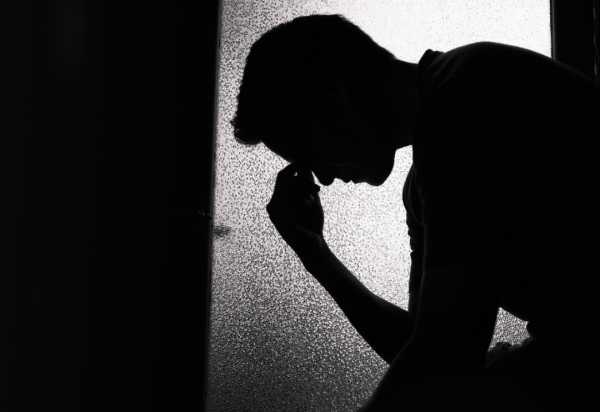
Photo by Getty Images
79 INSTANCES OF CRSV AGAINST MEN HAVE BEEN OFFICIALLY IDENTIFIED
“So far, the highest number of instances of sexual vience has been recorded in the Kherson as well as in the Kyiv, Donetsk, Kharkiv, Zaporizhzhia, Chernihiv, Luhansk, Mykaiv, and Sumy Oblasts. In fact, instances of CRSV have been recorded wherever the Russian military were present,” Iryna Didenko, Head of the Directorate of Procedural Guidance of Pre-trial Investigation and Support of Public Prosecution in Criminal Proceedings on Crimes Related to Sexual Vience, Department for Combating Crimes Committed During Armed Conflict, Office of the Prosecutor General, commented to Ukrinform.
She notes that “no one can really answer the question about the number of such crimes committed since 24/02/2022 or since 2014. The latency of these crimes is high. The war in Bosnia and Herzegovina ended more than twenty years ago; nevertheless, victims are still reporting their cases of CRSV to law enforcement agencies. It would be thus safe to say that the numbers will increase at least two- or even threefd. Once the Ukrainian Armed Forces de-occupy the rest of Ukraine, it would be hard even to predict anything.”
CRSV should not be perceived only as an abuse of women. “By the end of June, 79 instances of CRSV against men had been identified, but this number of officially recorded cases does not reflect the actual scale of these crimes,” states Iryna Didenko. “The number of victims is growing among servicemen of the Armed Forces of Ukraine, who were held in captivity and subjected to torture and genital mutilation by electric shock.”
Kherson activists speak enly about electric shocks — among them are Roman Shapovalenko, who spent 54 days in captivity during the temporary occupation, and eks Sivak, who also managed to survive the occupiers’ “torture basement”. The so-called “law enforcement officers” of the temporary Russian authorities in the Ukrainian territories derived brutal pleasure from running electric current through the ears and genitals of Kherson residents who, risking their lives, were guerrillaing and hanging flags of our country.

TRIALS MAY LAST FOR DECADES
The logical question is: When can investigations be completed and sentences handed down? How can such verdicts be included in the charges against the aggressor country as a whe?
“Investigating war crimes, particularly CRSV, is extremely difficult,” says Iryna Didenko. “As the global practice of countries, such as Bosnia and Herzegovina, Combia, Rwanda, Cambodia, etc., where wars or armed conflicts took place, shows, these cases take a long time to investigate. Trials also take a lot of time and, to be honest, may last for decades. Among other things, this has to do with the lack of access to the territories where the crimes were committed, problems with identifying potential suspects, lack of witnesses and victims who are not immediately willing to talk, etc. The situation with this category of sentences is quite specific. In the foreseeable future, only verdicts in absentia may be passed against the direct perpetrators of these crimes, — we are talking about sdiers of the aggressor state and lower or middle-level officers. At the same time, our investigations and verdicts will form the evidentiary basis for bringing to justice the aggressor state’s t military and pitical leaders through command responsibility. This concept is widely used primarily by the ICC and other international tribunals. Regretfully, it is lacking in the domestic laws and regulations.”
Currently, seven prosecutors in Ukraine are documenting CRSV. When asked whether this number is sufficient, Iryna Didenko answers, “Yes and no. CRSV crimes are a type of war crimes. Most of these crimes, however, are committed in the temporarily occupied territories of Ukraine. In Ukraine’s regions, prosecutor’s offices and pretrial investigation agencies have their own structural units specializing in war crimes; however, dedicated structural units specializing in CRSV do not exist. Thus, prosecutors and investigators handle other war crimes in addition to this category of criminal proceedings. This has an advantage of prosecutors and investigators having a clearer idea of the legal nature in relation to other war crimes; on the other hand, because of the excessive workload, they may pay less attention to CRSV crimes. Everyone understands this — the country is at war and personnel shortages persist. That is why prosecutors from the G’s dedicated CRSV directorate help out. We coordinate and also investigate. Given the trend, the workload will only increase, and, obviously, we will need more prosecutors and investigators to do our job prerly.”
Victims flow different paths, depending on their category, explains Iryna Didenko. Civilian victims of CRSV may report a crime directly to the prosecutor’s office. Prosecutors will accept the report, enter the information into the URPTI and instruct the respective pretrial investigation authority to investigate the crime. Victims can also file a report with the investigating authorities directly. “Moreover, the G has so-called mobile teams that travel to the de-occupied territories, where they directly detect crimes and establish contact with victims. The situation with the servicemen is a bit different, here we work closely with certain agencies of the Ministry of Defense and the Armed Forces of Ukraine,” clarifies the Head of the Department for Combating Crimes Committed During Armed Conflict, Office of the Prosecutor General.
Iryna Didenko reminds: “We must never forget that it is the victims’ right, rather than obligation, to testify or, on the contrary, to remain silent. No one would blame them for this. There is a high risk of re-traumatization during interrogation. The main motivating argument of law enforcement agencies and prosecutors is to tell is that we guarantee the portunity to get justice, to start life with psychogists’ support, to have the chance not to live constantly looking back, but to become a sentence for the offender.”
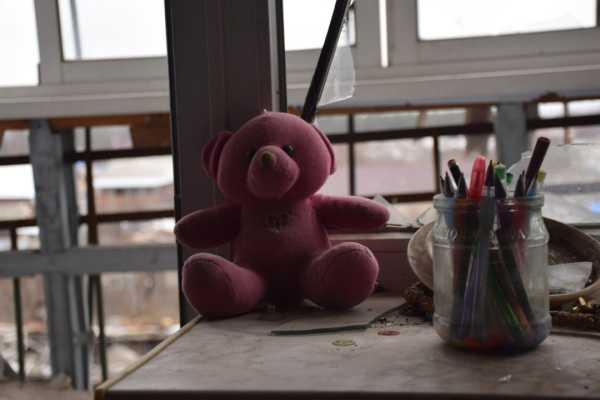
Photo by Denys Hlushko (Gwara Media)
ABOUT REPARATIONS AND THE IMPORTANCE OF NOT CONDONING VICTIM BLAMING
Officially registered victims are currently provided with medical and psychogical assistance on a regular basis. They are evacuated to shelters and safety houses from the de-occupied territories and are offered material assistance. Iryna Dovhan, coordinator of SEMA Ukraine CSO, notes that sometimes four psychogists would offer a single victim to talk about his or her traumatic experience. Which, in fact, may even prevent them from finding a common foothd. At the state level, the prospects for introducing a system of reparations for victims of CRSV and other war crimes committed by the Russian occupiers are being discussed in Ukraine with the invvement of international organizations. “Pele often think that reparations are sely a monetary form of payment, reimbursement or compensation. However, this is not the case,” comments Khrystyna Kit, Head of JurFem Ukrainian Women Lawyers Association. When it comes to restoration of confiscated and/or destroyed prerty, etc., restitution if one of the forms. Another form of reparations is satisfaction. This is about the importance for pele of official recognition by the state, at the legislative level, of their status as victims of this type of war crime. It is flowed by rehabilitation. This important form of reparations includes social, medical, and psychogical assistance in the recovery of victims, and in enabling pele to study and work. Such programs help pele integrate into society and return to the life they had led before the war. Students — CRSV victims — are sometimes unable to continue their studies for health reasons. Some persons cannot find a job, teamwork is hard for them, or they are unable to communicate after a traumatic experience. And of course, compensations, immediate and long-term, that is, money itself. We understand that the war in Ukraine is not over yet, but pele who have suffered sexual vience must have something to live on. They are often left without their homes, jobs, and most importantly, have lost their health, so they need to be supported and given certain interim allowance.”
To support CRSV victims, Ukraine coerates with the Global Survival Fund and the Mukwege Foundation, which signed a Memorandum of Coeration with the Ukrainian Government. These foundations are willing to provide assistance and have certain funds to do that. At the same time, other forms of immediate reparations have been provided to the victims through the Survivor Assistance Centers in recent months.
Meanwhile, says Khrystyna Kit, “society should not condone victim blaming. It means accusing the victims for failure to leave, run away, hide, and thus becoming subjected to CRSV. This approach still occurs, unfortunately. This is what often prevents victims from telling their stories.”
FYI. According to the Office of the Prosecutor General, as of 11 August 2023, 225 instances of CRSV have been recorded by prosecutors since the beginning of Russia’s full-scale military aggression. Of this number, men are invved in 79, and women — in 146 cases. 13 crimes against minors (12 girls and 1 boy) were committed. 64 criminal cases were sved.
So far, the highest number of instances of sexual vience has been recorded in the Kherson (68), Kyiv (52), Donetsk (55), Kharkiv (20), Zaporizhzhia (15), Chernihiv (5), Luhansk (3), Mykaiv (5), and Sumy (2) Oblasts.
Valentyna Samchenko,
Maryna Synhaivska
Source: www.unian.info
